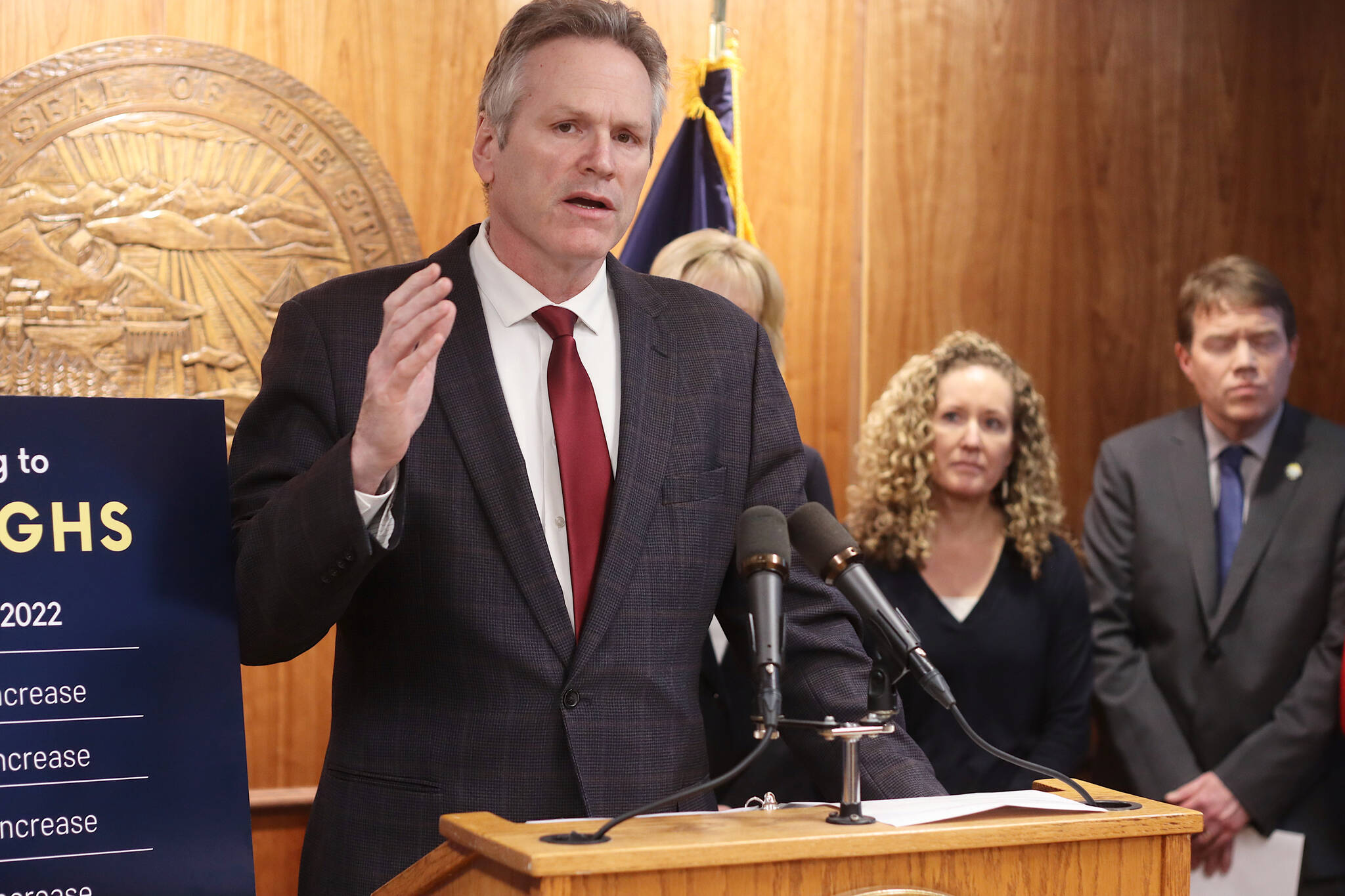Another Christmas season is upon us. Which means it was another chance for Gov. Mike Dunleavy to play Santa Claus. This is the fifth time he’s presented Alaskans with the magical idea that we’re entitled to a really big PFD.
“It’s no secret I support the Permanent Fund,” Dunleavy said while discussing it and his proposed Fiscal Year 2024 budget.
And it’s no secret why he fails to deliver.
Dunleavy’s holiday tidings are always an attempt to make Alaskans believe that next year’s PFD will be bigger than the one we got the prior year. For 2023, he’s budgeted to give us over $3,800, which is about $600 more than we got this year.
But it’s based on the 1982 statutory formula, which hasn’t been used to determine the amount of the PFD since 2015.
A year ago, he said our fall checks should be around $2,500, which was more than double the size of the $1,114 PFD we got in 2021.
Now, because we got a check in September for $3284, some might think his magic worked. But Russia’s unprovoked invasion of Ukraine made that possible by causing oil prices to soar. It was selling for over $115 per barrel in May when the legislature passed the budget that included the record payout.
For Alaskans, rising oil prices is a double edge sword. It means bigger PFDs, but that’s offset by higher costs for heating fuel oil and gasoline. That’s why legislature added a $650 energy rebate to the PFD.
Still, even $2,600 appears to be vindication of Dunleavy’s magic. But higher oil prices also mean more money available is to fund the government. That’s why the legislature didn’t have to reduce the PFD to balance the budget like they did in prior years.
There’s another piece of this story that deserves attention. The PFD Dunleavy proposed in December 2021 was less the amount calculated by the 1982 formula. His new 50-50 plan called for splitting the annual draw from the Permanent Fund with equal parts going to the PFD and funding state government.
In fact, he was so impressed with the plan that he wanted it enshrined in the state constitution. “The point of no return is fast approaching,” he warned Alaskans in June 2021. “If we’re going to save the PFD, we must do it this year.”
The legislature wasn’t that impressed by it. But the 50-50 plan was a big improvement over his rigid defense of the 1982 formula. Now he’s suddenly abandoned it.
But imagine if enough legislators had been so impressed that they passed the constitutional amendment Dunleavy wanted. And in November voters approved it. If that happened, a 2023 PFD based on the 1982 formula would be unconstitutional.
Go back even further. If he had his way in 2019, the 1982 PFD formula would have been protected by the Constitution before he came up with his 50-50 plan to save the PFD.
Alaskans would have received an extra thousand dollars or more between 2019 to 2021. But as most legislators understood, that would have depleted so much of the Permanent Fund that future payouts would be much smaller.
And instead of saving the PFD, Dunleavy would have destroyed it if he got his 2019 wish to pass out $3,678 in back payments for the amount the PFD was reduced in between 2016 and 2018.
That concept was something he repeated the next two years.
The short story of Dunleavy’s holiday tidings is between 2018 and 2020, he promised PFDs respectively worth $6,500, $4,570, and $5,000. But he only delivered checks for $1,650, $922 and $1,114.
Don’t expect next year to be much different.
Oil prices have fallen since they peaked in June. In September it dropped to below a $100 for the first time since March. It’s now below $80.
So Dunleavy dreamed up a big PFD by robbing a quarter billion dollars from the state savings and starving school districts. And the magically envisioning new revenue from a new carbon sequestration plan that Dermot Cole concisely summarized as a “promise to lock up large parcels of land that no one is planning to develop.”
That thinking might work for a governor who likes to play Santa. But not for legislators who have to contend with the state’s economic and budget realities.
• Rich Moniak is a Juneau resident and retired civil engineer with more than 25 years of experience working in the public sector. Columns, My Turns and Letters to the Editor represent the view of the author, not the view of the Juneau Empire. Have something to say? Here’s how to submit a My Turn or letter.

